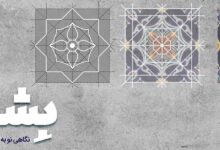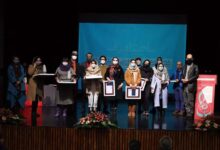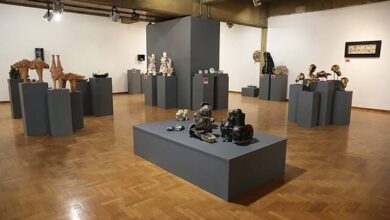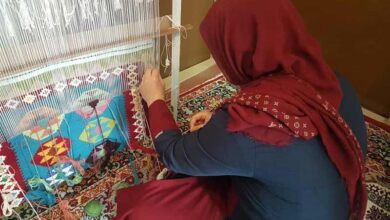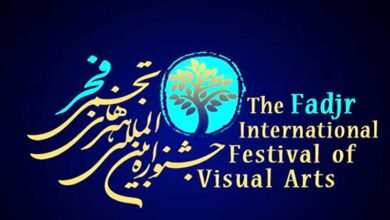Economization dominates Iran’s visual arts scene
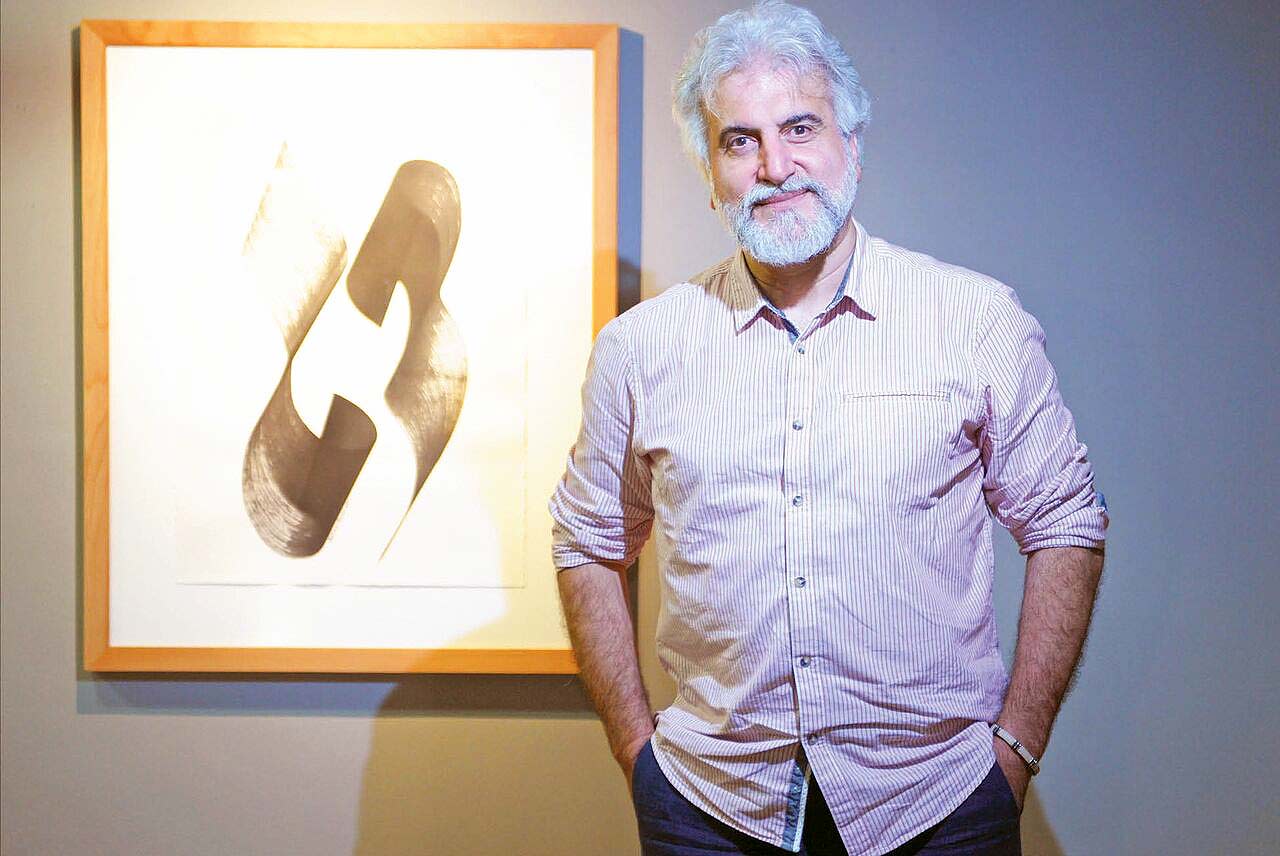
The founder of Musicalligraphy art school, referring to dominance of economicism in Iran’s visual arts, said: Inherent role of art is enlightenment, reflection and interpretation of social phenomena, but the subject, concern and first search of art, artists, thinkers and thinkers should not be economy. And it is an economist that is in conflict with its essence.
According to Artmag.ir, Bahman Panahi is a calligrapher, musician, stringed and Setar Instrument Player and founder of Musicalligraphy art school, living in France, born in 1967 in Behshahr.
In the field of calligraphy, he benefited from presence of Masters such as Seyed Ali Hosseinpour, Gholam Hossein Amirkhani, Yadollah Kaboli Khansari and Zinda Yad Abdollah Foradi, and in the field of Iranian music with professors such as Dariush Pirniakan and Late Ataollah Zahid Shirazi, Mohammad Reza Lotfi and Houshang Zarif is educated.
Panahi is a graduate of Faculty of Fine Arts of Tehran University and Paris Sorbonne University, and the subject of his doctoral dissertation in field of visual arts and musicology is research and analysis of the physical relationship between music and calligraphy form of presenting a new idea and concept called: Musicalligraphy.
This artist, while actively participating in exhibitions, festivals, holding educational courses and performing music in some countries and teaching in universities and art centers in Paris, has been teaching as a visiting professor at major universities in world such as Harvard and North Eastern for many years.
In June 2022, first group exhibition of Musicalligraphy, works by master Bahman Panahi, along with more than 50 works selected by students of this art school from all over Iran, was held in Aineh Gallery of Saba Cultural and Art Institute, affiliated to Art Academy.
With Professor Panahi, about the establishment of first Musicalligraphy group exhibition in Iran and audience’s reception of this exhibition, how musical calligraphy school of art was formed, definition and explanation of this school to artistic community, reception of it by the artistic community, state of visual arts in Iran and subject of future exhibitions of this school. We sat down to talk with artist, which you will read below:
How was audience’s reception of first Musicalligraphy group exhibition in Iran?
This exhibition went very well and we saw a significant qualitative response from audience, in sense that professors, artists, experts and students visited works of exhibition and were interested in knowing more about concept of musical calligraphy. We talked about this concept, which was very fruitful, and for this reason, qualitative aspect of audience’s reception of exhibition was important to us, and fortunately, we reached that goal.
Explain about artistic concept of Musicalligraphy and how it is formed?
Musicalligraphy is a concept derived from two words music and calligraphy and is a combination of two arts of music and calligraphy. In my educational history; Since my childhood and adolescence and then during my university studies, I performed works in two fields of art, music and calligraphy, and I gradually came to conclusion that these two arts have common aspects and close foundations to each other and can be introduced as a single format. and have a single artistic language. Therefore, during my studies at University of Tehran and in France, I searched more and tried to combine the concepts of calligraphy and music and present them in form of an art school. Iran was formed and I introduced it to artistic community.
Based on this, first Musicalligraphy group exhibition was held in Iran; The art students of this exhibition were selected after a national call in the last 2 years and in a continuous distance learning course and participation in several specialized workshops, they were able to create works within framework of this concept and results were presented in this exhibition.
From a theoretical point of view, Musicalligraphy is an artistic concert, which means that we should search for it in form of artistic concepts and foundations. This is first condition to know and understand concept of Musicalligraphy. This concept has different aspects; One of its outputs is creation of works of art in realm of contemporary and modern calligraphy, whose examples were exhibited in first group exhibition of Musicalligraphy, a symbolic part. So, there is a theoretical, scientific and academic part, which should be introduced and learned in same format so that people can learn it, which was my doctoral dissertation project in university.
The third side of Musicalligraphy is live performance, which I love. Considering that I am a musician and interested in performing, I expanded it and this is the part where we perform topics of calligraphy and modern calligraphy along with music in presence of viewers and listeners. Maybe this question will be raised for audience that this event has been implemented before and will continue to be implemented. The main difference of Musicalligraphy is that, theoretically, in calligraphy and visualization, the data of concept of Musicalligraphy is used, and secondly, relationship between music and calligraphy is such that performance of musicians overlaps with art of calligraphy.
In form of Musicalligraphy, music is not an ambient sound that creates an atmosphere. In this sense, music is taken in service of performance, calligraphy aligns itself with language and artistic expression of music that is performed, and this harmony between these two collections should be studied. In this context, we performed this work for first time in Musicalligraphy group exhibition and it was successful.
Traditional calligraphers are usually not willing to deviate from classical framework and rules. You established a new school with innovation and creativity. What problems did you face in this way?
I was and am a traditional calligrapher and I teach this art. First, I had to clarify and solve this issue and challenge for myself, how to take myself from this space to another space that has foundations, knowledge and a different path to achieve results. This challenge was solved for me over time, with work, practice and study, but naturally there was a challenge for artistic community and audience; Apart from that, some of our traditionalist artists criticize and resist the acceptance of concept and discourse of Musicalligraphy.
First of all, many issues in these communications must be resolved. I have no problem listening to traditional topics. Because I have gone through these stages and am completely familiar with it, I respect its language and I absolutely love it. If I don’t have time to write Chalipa or book, and if I don’t say every night, I have to write homework several nights a week. Because many of the elements in my new work and in school of Musicalligraphy, its roots and aesthetics are taken from traditional calligraphy and calligraphy.
The foundation and structure of art and our thinking is also taken from traditional calligraphy, but I expect that people who believe, are experts and study in this field, about new artistic topics; Come and hear about backgrounds and presuppositions of modern and contemporary arts, especially Musicalligraphy, to get a better understanding in this field. Of course, this resistance is natural and common and has always been the same throughout history. Art of Calligram faced resistance, criticism and adversities in history, but today it is a major part of the visual arts culture of country, so Musicalligraphy is a new concept and it has been formed for 10 years and I introduce it as a new art.
Calligram was also based on the essence of innovation in traditional calligraphy in the 60s, do you consider yourself to be a continuation of this school or what you do is a school with a new identity that has nothing to do with Saghakhaneh school?
To call Musicalligraphy in continuation of Saghakhaneh school, Calligram, in a sense, it is and is not. It is because, anyway, those spaces and movement made us find the courage to deal with the subject of handwriting and calligraphy in a different way and enter this art from a different perspective. For this reason, I also follow same point of view, but in terms of basics of aesthetics, structure and artistic patterns, no. Because Calligram dealt with the art of calligraphy from a painterly perspective. The historical document is that there were a number of painters and visual artists who entered this story and raised this issue.
I am speaking from perspective of music and sound, which are two different issues. Painting and calligraphy both have visual bases and are considered static arts, while music is a dynamic art and time plays a role in it and is not like visual arts. Therefore, the foundation of calligraphy and music are different from each other. This was my challenge, how can we present the sound, listening and musical landscape of a visual work and face it. In this sense, it was a serious difference. Therefore, I found the courage to enter calligraphy and calligraphy from the perspective of audio, listening and musical arts.
In Musicalligraphy, is the sound produced next to the calligraphy work or does audience hear rhythm, tone and harmony inside work?
Musicalligraphy, as a concept, is a subjective discussion. We should not use it so explicitly for physical. Because in that section, we enter into subjective and objective debates, which are difficult for us to explain, unless someone raises these debates in form of a research and academic project, but in its objective and very simple form, it is that we try we create an audio source or version in our mind of what we are picturing, or we create an audio model. That is, when you ask about Musicalligraphy, I came to the point that movements, gestures, forms and shapes as fundamental features that exist in a visual work, rhythm, space, stretches, distances, etc. (as a feature of a musical work) is also present in that work. I hear these in preliminary design (etudes) and performances and I wish for it. When I run a form, I feel like I’m making a sound.
Musicalligraphy is essentially different from works of Wassily Kandinsky?
I started Musicalligraphy with discussion of calligraphy. Because this is common basis of music and calligraphy. Calligraphy is an art that is historically called black and white art or the art of combining lines and dots. All calligraphers in world also believe in such a point of view, and this dot and line was the first spark that was created in my mind. In music, there is also concept of duality of silence and sound, and these are beginning of organic formation of a piece of music or experimentally. Because Kandinsky seriously raised point and line discussion based on the basics of visual arts. Yes, it can be so, but Kandinsky did not raise the discussion of musicality and musicality as an intermediate theory, but rather as forming and structuring symbols of painting and visual art, which are also musical. From this point of view, the line and the point are, in a sense, silence and sound with different forms, trends and actions that can create a visual work such as Musicalligraphy and create a piece of music in music.
Considering that you have studied and teach in France for many years, why do you still have an interest in traditional art of Iran and the education of Iranian students?
I am a child of Iran. Iran has given me many things. The first thing he gave me is that when I think about the roots of my land, we see it as cradle, land and the origin of a large part of history, culture, art, thought, mysticism and philosophy. It is true that a person’s birthplace is not in his control, but his happiness or being lucky, where and under what conditions, geography, land and which culture and civilization he was born, is a part that causes happiness. For this reason, I always consider myself indebted to this background and origin that I was born in this land.
If today I was able to proudly introduce the Musicalligraphy school in another country, major part of it is due to the historical and cultural self-confidence that has been instilled in me. I felt, our ancestors; Iranians have always represented good and new movements in world history, cultural and civilizational history. I didn’t feel that I was incapable. I think it was in my subconscious. Therefore, when I feel that this gift has been given to me, I must also give something to this land, country and people.
Maybe this was the first feeling I had. Because I wanted to share my artistic and research achievements with my compatriots, young people, especially today’s generation. This topic helps me a lot to be able to have a dialogue with the main origin that I grew up with; I want to share the knowledge that I have gained today with my fellow speakers, like-minded people and cultures, what kind of feedback it has and how it can be presented.
Anyway, a part of it is feeling I have towards my country, Iran, I am very proud of this, and it does not mean that I only serve culture and art of my country for a short time, but a corner of what I learned in I give a gift across borders of the country. This relationship is mutual, in France, a part of my teaching is teaching traditional arts and Iranian calligraphy in traditional way. I always tell my friends in France that this is a gift I brought you from Iran and what I learned here is a gift I take to Iran.
When you were in Iran, did you visit art exhibitions?
During this time, I visited 2 visual arts exhibitions.
Given that you live in France and visit galleries in that country, how do you evaluate visual arts scene in Iran? Do you think Iran’s visual arts are doing well?
The subject of visual arts is influenced by society, nothing else is outside of these relationships. If state of society is good, state of calligraphic artists and visual arts is also good. If artistic atmosphere of Iran is not good, current state of artist cannot be good, it is not an island thing, but if we want to not talk in general and focus on subject of art and visual arts, I can make two criticisms. One is disorder that is affected by social conditions and general atmosphere of country, without wanting to be bitter and negative. You can see this issue, for example, from the way you drive on street and you can understand it from relationships that exist.
Chaos means that there is no rule and order and relationships. You can see this completely in the art space. I can’t have a clear view of what atmosphere of galleries, research atmosphere and economic atmosphere of art are like, I can’t define these correctly and clearly. I find a lot of things dumb and sloppy, that’s one thing I see.
My second critique on state of visual arts in country is economicization. It means that throughout history they don’t buy art and it’s nothing more than that. This is not a new issue. The topic of art, the topic of thinking, enlightenment, intellectualism and culture, these are the topics that inherently exist to interpret and express and reflect phenomena of society. If they want to deal passively, they are in conflict with their own nature, I cannot say as a person of art, culture and thought. Because society, system and conditions are like this, I am like this too. This view is contradictory to essence of culture, art and thought. I understand economic conditions, but subject, concern and first search of art, artist, intellectual, enlightener, thinker and thinker should not be economics and economics, it is in conflict with his nature. Based on my experience in other countries, those people who step into this valley, in the first place, have accepted this issue to themselves that their job is not business, the economy may be against us, and financially and economically, we may not succeed. But essence of our work is to reach enlightenment by accepting this issue.
What message do you follow in your artworks?
I am not looking for a message in art. I don’t believe that the primary position of art should be messaging, but a sensory and conceptual relationship should be created with a subject, thought, thought and word, in order to work on it. This also comes from same origin of my calligraphy that I have worked and written with literature, poetry, words and concepts for many years. The various projects that I follow are mostly in a special situation, my previous project: is Bigah. Concept of Bigah, which was inspired by Rumi Great, and my next project: is Mehr. Word Mehr, which is very important in both Iranian and Eastern mythology and In terms of vocabulary, it is very beautiful, conceptual and symbolic, in terms of terminology, it is mystical and philosophical. I have been working on this topic for a long time and I worked a lot in different aspects, form and stability, etc. to reach this form; A transformation has been created in terms of the form of Nastaliq and Broken Nastaliq, in my opinion, if we want to interpret concept of Mehr as love, it is a noble, honorable, proud and magnificent love. I designed this form, and many works in visual terms And I made panels, some of which are now displayed in different places.
For first time (in the form of the Mehr concept), I tried to present my works in a volume format with different materials, which was a very good experience. Of course, in my youth, I had experiences in creating volumetric works and sculptures, this time the Mehr compositions are very lovely to me, I think that it is very close to concept of love, in terms of Iranian mythology, and in terms of form, dance: Ho Bari It has been very inspiring for me, these two forms are dancing and communicating with each other or, for example, in a work called Seven Love Cities, Seven Layers of Mehr, they were placed together with a harmony and stability. My works will be a collection of different sizes and bigger in the form of the Mehr concept. In the first Musicalligraphy group exhibition, a number of works for example were exhibited to introduce this new concert, and I hope these works will soon become a collection.
My next exhibition in Iran and outside of Iran will be on Mehr project. Visually and musically, I like them very much, and I think the reason for my feeling was that today in the world and in Iran, we need kindness, kindness and love more than ever. We need to be kind to each other and try to live more lovingly and I think this is our serious need today.




